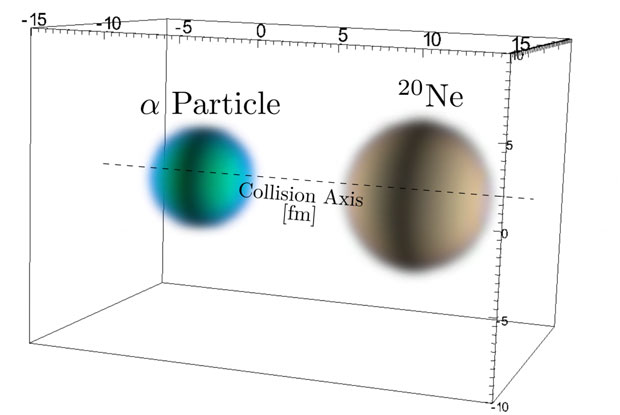Nicholas Scielzo (16-ERD-022)
Project Description
Nuclear reactions are vital to nuclear science and its many applications: they are the mechanism for forging elements in the cosmos, the source of energy for both stars and nuclear weapons, the principal probes used to study nuclear properties, and the primary diagnostic signatures for stockpile stewardship and nuclear forensics. In particular, nucleosynthesis—the process that creates new atomic nuclei from protons, neutrons, and other nucleons—and weapon-performance simulations require detailed knowledge of reaction rates on unstable nuclei. Yet, most reaction experiments have been confined to the small fraction of all nuclei that are stable, and a theoretical foundation for reactions with a true predictive capability is lacking. The broader nuclear science community has begun building major programs to take advantage of the unprecedented yields of radioactive isotopes that will soon be available at the Facility for Rare Ion Beams at Michigan State University. We plan to establish the multifaceted program needed to determine neutron-induced reaction rates on radioactive nuclei at this facility through a coordinated effort that takes advantage of the nuclear physics, radiochemistry, nuclear theory, and high-performance computing expertise at LLNL. We will develop (1) direct measurement techniques for long-lived radioisotopes, where production rates and decay properties allow; (2) indirect approaches for isotopes too short-lived to be accessed with direct measurements; and (3) a fully microscopic and unified description of reacting nuclei that moves beyond empirical models. In all cases, these approaches will be demonstrated on isotopes that can be studied using capabilities available now at the National Superconducting Cyclotron Laboratory at Michigan State University and elsewhere over the next three years.
The Facility for Rare Isotope Beams offers the opportunity to rectify the long-standing gap in understanding reactions for radioactive nuclei needed to revolutionize the fundamental scientific understanding of the origin of heavy elements and to measure the nuclear data required for high confidence in the safety, security, reliability, and effectiveness of the U.S. stockpile. We expect to establish the diversified suite of approaches needed to determine neutron-induced reactions on radioactive isotopes at this facility. For isotopes near stability, we will develop isotope-harvesting techniques and perform direct neutron-capture measurements on samples such as zirconium-88. For isotopes more than a few nucleons off of stability, we will develop indirect methods using nuclear beta decays and inverse-kinematics surrogate reactions in which we bombard lighter target nuclei with a radioactive heavy-ion beam. These efforts will be accompanied by the development of a predictive theory of nuclear reactions, which will be crucial to successfully interpret the experiments and reliably extract desired cross sections from indirect measurements and provide reliable predictions for the vast majority of reactions for which there are no measurements.
Mission Relevance
A successful research project will allow for breakthroughs in the understanding of reactions on radioactive nuclei at the Facility for Rare Ion Beams, which is relevant to the Laboratory's core competency in nuclear, chemical, and isotopic science and technology. Developing approaches needed to determine neutron-induced reactions on radioactive isotopes is also highly relevant to the focus area of stockpile stewardship science. Furthermore, the project will develop strong partnerships between the nuclear physics, radiochemistry, and nuclear theory and modeling groups at LLNL and the scientific community developing programs at the Facility for Rare Ion Beams. It also positions the Laboratory to maintain and enhance its nuclear science program.
FY16 Accomplishments and Results
In FY16 we (1) recruited a graduate student for the indirect beta-decay techniques; (2) received approval for National Superconducting Cyclotron beam time for our experimental effort; (3) began our collaboration with the existing National Superconducting Cyclotron isotope-harvesting effort and submitted a proposal to harvest zirconium-88 at the cyclotron; and (4) obtained initial microscopic solutions for two nuclei at finite distance by performing density-functional-theory calculations with a two-center potential well, and formulated the projectile–target wave function in the body-fixed frame of reference, shown in the figure.
Publications and Presentations
- Liddick, S. N., et al., "Experimental neutron capture rate constraint far from stability." Phys. Rev. Lett. 116, 242502 (2016). LLNL-JRNL-678694. https://doi.org/10.1103/PhysRevLett.116.242502
- Tveten, G. M., et al., "Completing the nuclear reaction puzzle of the nucleosynthesis of Mo-92." Phys. Rev. C 94, 025804 (2016). LLNL-JRNL-704523. https://doi.org/10.1103/PhysRevC.94.025804






